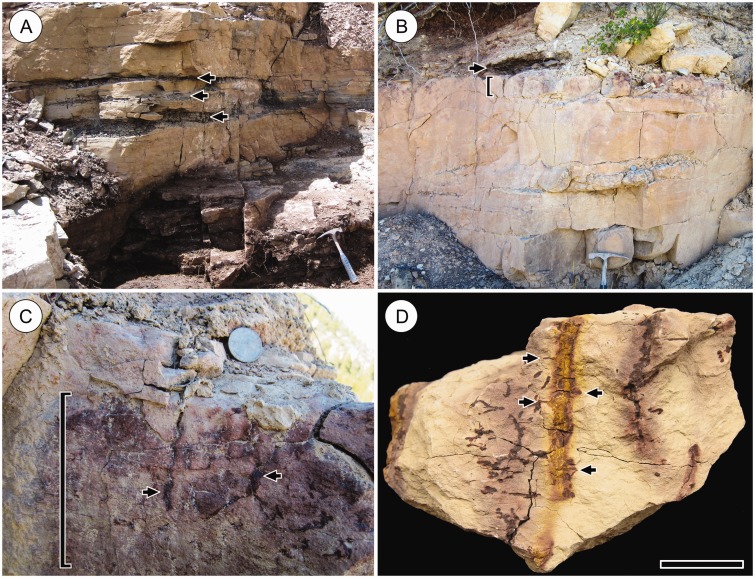Fig. 9.
Outcrop at Cottonwood Canyon. (A) Stratigraphy of layers containing in situ specimens of the Cottonwood Canyon lycophyte. Darker shale layers containing in situ stem mats (arrows) alternate with lighter, thicker siltstone layers, in which downward-growing root-bearing axes are preserved (see Fig. 8). Hammer head = 17 cm across. (B) Uppermost stem mat layer (arrow) overlying a thick siltstone layer. The approx. 12-cm-thick zone at the top of this siltstone layer (bracket) contains numerous vertical in situ root-bearing axes and exhibits much more pronounced oxidation mottling than the layers below, reflecting pedogenic effects of rooting structures. (C) Detail of rooting zone of siltstone layer in (B) showing exposed oxidized root-bearing axes (arrows) and pronounced oxidation mottling. Quarter dollar coin is shown for scale. Brackets in (B) and (C) indicate the same thickness of rock. (D) Vertical root-bearing axes in rock specimen originating from rooting zone in (C). Note bases of diverging roots (arrows). Scale bar = 20 mm. HPH 310.

